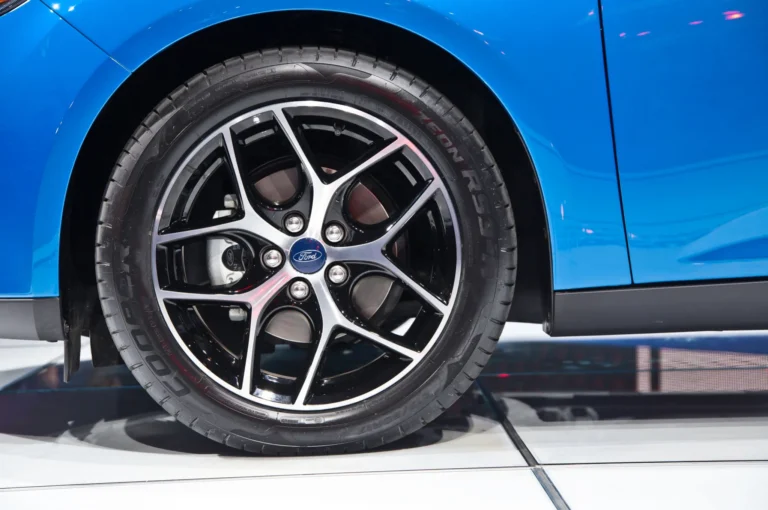Wheel bolt patterns
Last Updated on February 1, 2024 by Mutiara
A bolt pattern or lug pattern is the diameter of a circle formed by the centers of the wheel lugs. Bolt patterns can be 4, 5, 6, or 8 lug holes. A bolt pattern of 4×100 would indicate a 4 lug pattern on a circle with a diameter of 100 mm. The bolt pattern is comprised of two numbers, the first indicates how many bolt holes are on the wheel, and the second describes how far apart they are. A bolt pattern of 5-115mm would mean the wheel has five bolt holes and they are 115mm apart (measured across the center of the wheel).
Offset
The lists of bolt patterns to the right includes OS (offset) information in the last two columns. The offset of a wheel is the distance from the mounting surface of the wheel to the true centerline of the rim. A positive offset means the mounting surface of the wheel is positioned in front of the true centerline of the rim / tire assembly. This in effect brings the tire in to the fender well more. Conversely, a negative offset means the mounting surface of the wheel is behind the true centerline of the rim / tire assembly. This will cause the tire to stick out away from the vehicle.
The bolt patterns are marked as either H, M, or L
H = High positive offset – FWD Typically +45, 40, 35 offset
M = Medium offset – RWD Typically +20 offset
L = Low offset – RWD Typically 0 offset
Dual bolt patterns
More often called “dual drilled”, some manufacturers (usually cheaper ones) are building their wheels with two bolt patterns. This expands the number of fitments the wheel applies to. For example, a wheel with a 4-100/114.3 bolt pattern has 8 lug holes and will fit both 4-100mm and 4-114.3mm fitments. Without close examination, certain wheels can be mistaken for dual bolt pattern wheels, as some manufacturers will sometimes add a second set of holes only for aesthetics and weight savigs. The holes are often straight through and have no mating surface for the wheel lug nuts.
Centerbore
Centerbore relates to the center hole in the wheel that centers the wheel on the hub of the car. Since most wheels are mass produced, they have a large center bore to accommodate several different vehicles. If this is the case, it is recommended that a hub ring is used. Hub rings are hard plastic or metal ring that fits between the wheel and the vehicle. This centers the wheel perfectly on the hub ensuring that there is no run out when the wheel is installed on to the vehicle. Without hub rings it is possible to get vibrations even if the wheel / tire assembly is perfectly balanced.
Measuring bolt patterns
Bolt patterns play a crucial role in ensuring the proper fitment of wheels on your vehicle. Understanding how to measure bolt patterns is essential when it comes to replacing or upgrading wheels. In this guide, we will break down the process of measuring bolt patterns, providing you with the knowledge to confidently choose the right wheels for your vehicle.
- What is a Bolt Pattern? A bolt pattern refers to the arrangement of the bolts or studs on a wheel hub and is denoted by two numbers. The first number represents the number of bolt holes, while the second number indicates the diameter of the circle formed by those bolts. For example, a bolt pattern of 5×114.3 means the wheel has five bolt holes, and the diameter of the circle they form is 114.3 millimeters.
- Counting Bolt Holes:
- Start by locating a bolt hole on the wheel and count the number of bolt holes around the center. Most common patterns have 4, 5, 6, or 8 bolt holes.
- It’s crucial to count accurately, as mistaking a 4-lug pattern for a 5-lug pattern can lead to incompatible wheel choices.
- Measuring Bolt Circle Diameter:
- To measure the diameter of the bolt circle, find the center of any bolt hole and measure from the center of that hole to the center of the opposite hole.
- If you have an odd number of bolt holes, measure from the center of one hole to any point on the imaginary circle that passes through the center of the other holes.
- For even-numbered bolt patterns, measure from the center of one hole to the center of the hole directly opposite it.
- Common Bolt Patterns:
- 4×100, 5×114.3, 6×139.7 – These numbers represent popular bolt patterns, and understanding them simplifies the process of finding compatible wheels for your vehicle.
- Research your specific make and model to determine the factory bolt pattern, or consult your vehicle’s owner’s manual.
- Using a Bolt Pattern Template:
- Bolt pattern templates are available online or at automotive stores. These templates have holes positioned to match common bolt patterns, allowing you to quickly identify the pattern without manual measurement.
- Pay Attention to Offset:
- In addition to bolt pattern, it’s crucial to consider wheel offset, which is the distance from the wheel’s mounting surface to the centerline. Incorrect offset can affect handling and tire clearance.
Conclusion: Measuring bolt patterns may seem like a technical task, but it’s a fundamental skill for any vehicle owner or enthusiast. Armed with the knowledge of how to accurately measure bolt patterns, you can confidently navigate the world of wheel options, ensuring a perfect fit and enhancing the aesthetic and performance of your vehicle.

